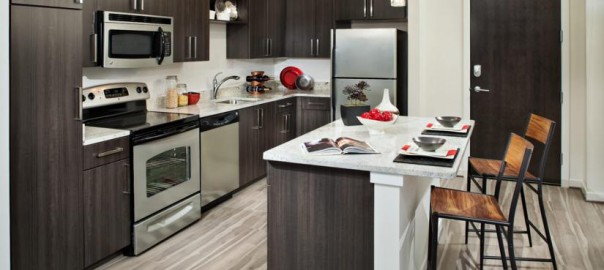Apartment Building to Condominium Conversion in Houston
 The potential profits from condo conversion are similar to buying raw land and then getting permission to subdivide it into smaller lots for sale. Profits can be extracted from buying a large real estate property like an apartment building, converting it to condominiums, and selling it in smaller pieces.
The potential profits from condo conversion are similar to buying raw land and then getting permission to subdivide it into smaller lots for sale. Profits can be extracted from buying a large real estate property like an apartment building, converting it to condominiums, and selling it in smaller pieces.
A nice example of the profitable economics of condo conversion is shown by the $100 million conversion project of the River Oaks Apartments into a luxurious high-rise condominium complex that was reported in Culture Map online magazine.
The apartment building has 240 units. After conversion, the luxury high-rise building will have 76 condominiums selling for the average of $2 million apiece and two ultra-luxury penthouse condominiums priced at $10 million each.
That creates about $172 million in gross revenues before expenses for a $100 million investment. After the deduction of expenses, the owner of the project will likely gain a profit of up to $30 million.
Real estate investors who do smaller condo conversions can profit from this type of opportunity. It is possible to make profits by converting much smaller buildings into luxury condominiums. The key to success is making the new condominium building luxurious so the condos sell for a great price after the conversion is completed.
The tricky parts are getting the permits and approvals to make the conversion and then getting the existing rental tenants to vacate the building. Of course, this effort can run into terrific resistance and legal problems. It helps to have “deep pockets” before taking on such a challenge.
Here are the ten steps necessary to create a condo conversion:
1. Identify all the stakeholders – Stakeholders include legal and accounting professionals, the property owner, tenants, a real estate company, a title company, a lender, members of the local government, administrative officials at building department, and inspectors from health, fire, and safety. For the conversion part of the project, additional stakeholders include an architect, an interior design firm, an engineering company, and a construction company.
2. Organize Legal Documentation – Legal counsel is necessary throughout the entire project to prepare documentation needed for the different stages of the conversion.
3. Get Control of the Building – Legal control over the building is necessary to be able to submit the plans for conversion to the local authorities for approval. This control may be an option to buy the property or a purchase of the property. In some cases, it is possible to form a joint venture with the current property owner.
4. Create Renovation Plan Documents – These documents include architectural drawings, site plans, interior design plans, and financial projections.
5. Obtain Project Approval – This stage requires submitting all the conversion plans to the local authorities, revising the plans as necessary to gain approval for the project, and paying any necessary fees.
This stage typically includes the presentation of building plans to the City Council for approval. Sometimes the approval is simple if the area is zoned for condominium buildings and the building to be converted has no special case issues, such as being a historic site.
6. Finance the Project – The financing for the project is obtainable only after receiving approval of the conversion plans. The financing may include different types of loans obtained in sequence such as a) a building acquisition loan, b) a construction loan, and c) a take-out loan for the full investment the project, after the completion of construction.
7. Remove Tenants from the Property – The best way to achieve this is by voluntary tenant departure from the building. Sometimes the existing tenants are paid to leave. Other times the only way to get the existing tenants out of the building is by using an eviction process. If evictions are necessary this may cause a disturbance in the community. There may be protests and/or legal action by the opposition to the project.
8. Get Building Permits – The final approved building drawings allow for “pulling” the building permits.
9. Begin Construction – Construction starts right away after getting the building permits because the permits generally have a limited lifespan.
10. Market the Condominiums – Condominium conversion projects start selling the condos before they are built. The developer may offer custom features as add-on items to the condo sale.
Summary
Condominium conversion of apartment buildings is a popular real estate investment strategy in Houston and elsewhere. The risks are significant when attempting a condo conversion project, yet the rewards are high when successfully completing one.
In order to succeed, it takes a skilled real estate investor, who has in-depth knowledge of the local politics and a strong background in construction or an investor who has close affiliations with those that have these characteristics.